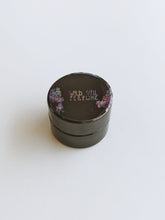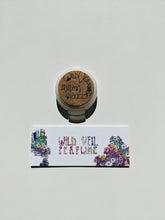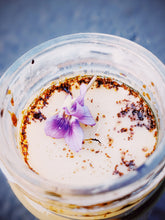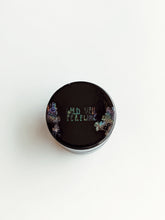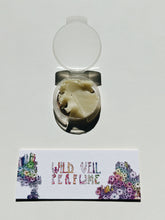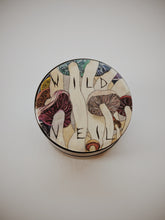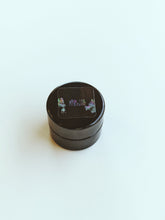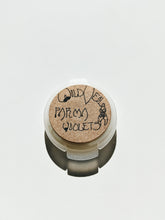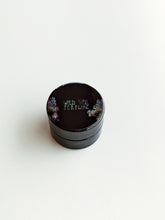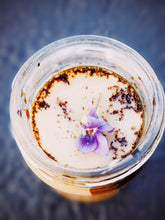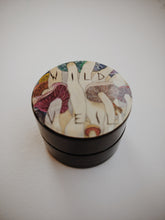
A B O U T • W I L D • V E I L • E N F L E U R A G E
Enfleurage is a beautiful process whereby odorless fats that are solid at room temperature are used to capture the fragrant compounds exuded by plants. Enfleurage is by far one of the oldest methods of fragrance extraction, and it is nearly extinct. Only a handful of artisans still practice it today as it is no longer used in the manufacture of perfumes on a mass scale. A voluptuous art, enfleurage is quite the labor of love, consuming time, labor, and expense. Historically enfleurage was done by women, or maidens, in the fields of Grasse, France. Although far rarer to find enfleurage products in the market today, is still "largely" practiced by women.
There are two types of enfleurage: "cold" and "hot." Wild Veil exclusively uses cold enfleurage:
In cold enfleurage, a large framed plate of glass, called a chassis, is smeared with a layer of fat, traditionally unscented animal fat rendered from lard or tallow, and allowed to set. Wild Veil does not use any animal fat whatsoever! My enfleurage products are organic and botanical; I purvey fats from a variety of nut and plant butters such as shea, jojoba, avocado, fair trade palm, and mango. Botanical matter, usually petals or whole flowers, is then placed on the fat and its scent is allowed to diffuse into the fat over the course of 1-3 days. The process is then repeated (up to 36 times depending on the fat and the botanical matter) by replacing the spent botanicals with fresh ones until the fat has reached a desired degree of fragrance saturation. The cold fat process was developed in southern France in the 18th century for the production of high-grade concentrates.
In hot enfleurage, solid fats are heated and botanical matter is stirred into the fat. Spent botanicals are repeatedly strained from the fat and replaced with fresh material until the fat is saturated with fragrance. This method is considered the oldest known procedure for preserving plant fragrance substances. So far Wild Veil only incorporates cold enfleurage into products.
In both instances, once the fat is saturated with fragrance, it is then called the "enfleurage pommade." This is a highly perfumed solid fat, not to be confused with pomade used for styling hair. Historically, this enfleurage pommade was either sold as it was,* or it could be further washed or soaked in ethyl alcohol to draw the fragrant molecules into the alcohol. When the alcohol was separated from the fat and allowed to evaporate, it would leave behind the absolute of the botanical matter. The spent fat would typically be used to make soaps since it is still fairly fragrant. *This listing is for an organic pommade.
The advent of modern perfumery ushered in the ease and relative inexpense of commercial solvent-based extraction of natural materials along with mass production of synthetic compounds, making the art of enfleurage seem highly inefficient and costly in comparison. The method is now superseded by more efficient techniques such as solvent extraction or supercritical fluid extraction using liquid carbon dioxide (CO2) or similar compressed gases. Enfleurage had been the sole method of extracting the fragrant compounds (containing thousands of aromachemicals) from delicate floral botanical such as jasmine and tuberose, which are be destroyed or denatured by the high temperatures required by cheaper methods of fragrance extraction such as steam distillation. It is still believed by some perfumers that enfleurage remains the only way to capture and preserve the full range of complexity of certain scents, particularly of flowers.
r a w ☽•☾ m a t t e r
Wild Veil natural perfumes are composed by me, Abby, using homemade, wildcrafted and organic aromatics in Vermont. These include my handmade enfleurage, tinctures, enfleurage extraits, absolutes, resinoids and concretes, and floral waxes. I spend as much time growing plants and foraging as I do composing perfumes.
h o w ☽•☾ t o ☽•☾ w e a r
The best way to experience a natural perfume is to apply it to well-moisturized skin, without rubbing in (absorption only shortens the wear time of fragrance) and without scrubbing off. Natural perfumes are dynamic and take a minimum of 2 hours to reach their final stage, or dry down. Enjoy the alchemical changes as they unfold from the initial intensity of top notes, to the warmth of the heart, to the depth of lower base notes.
☽•☾ Wild Veil ☽•☾ alchemy between earth and ether ☽•☾
☽•☾ All aesthetic material copyright Abby Hinsman 2022 ☽•☾










